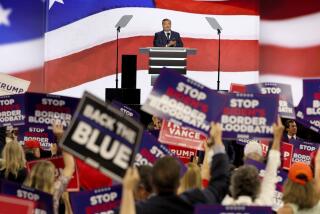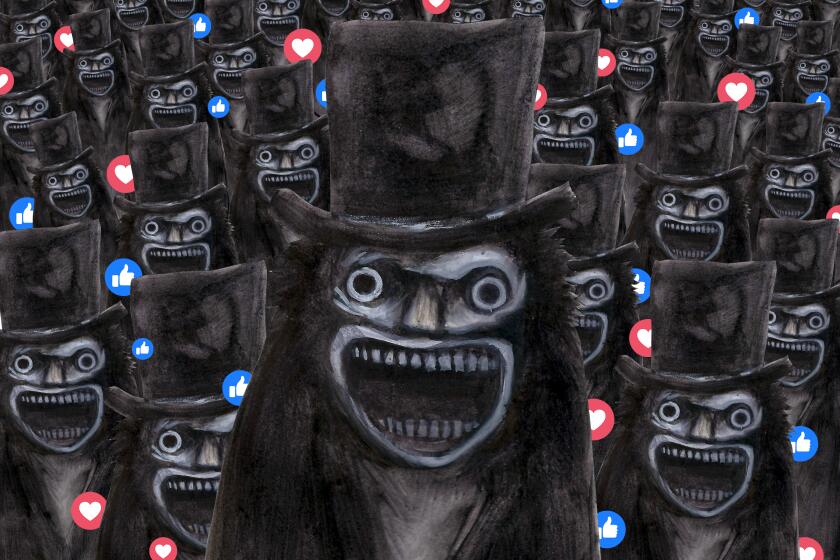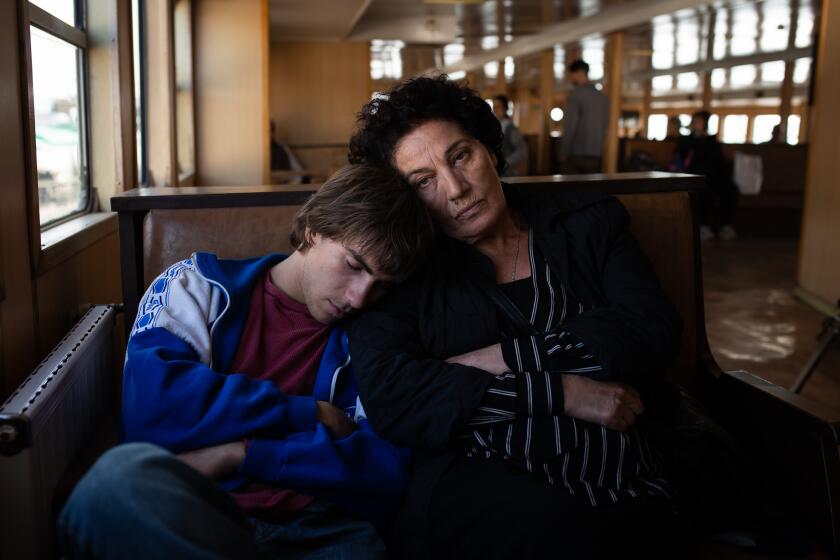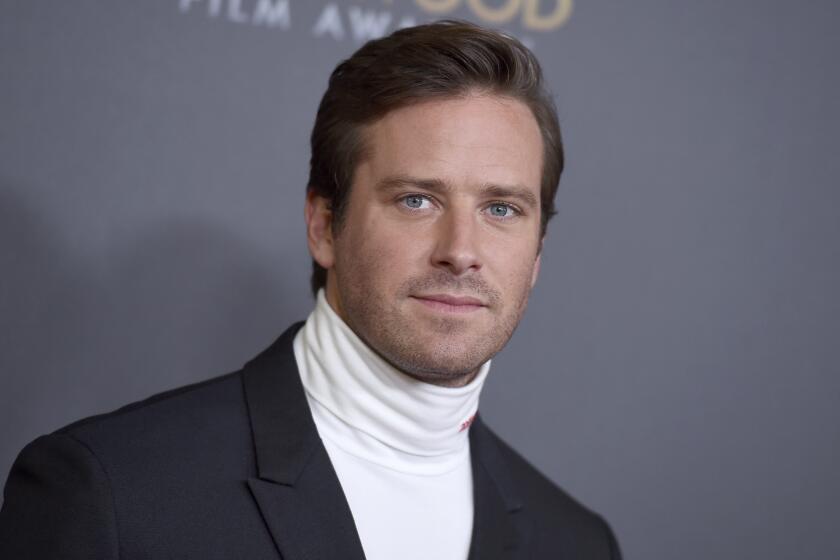Gun violence explodes in PG-13 films
When the first “Die Hard” and “Terminator” movies landed in theaters in the 1980s, both were rated R. But their sequels arrived with PG-13 marks — even though the level of violence had actually escalated.
Critics have blasted Hollywood’s movie ratings for years, claiming that the Motion Picture Assn. of America takes a prudish view of sex and foul language but a very liberal one when it comes to mayhem and bloodshed.
A new report provides strong evidence for that critique, concluding that gunplay has tripled within PG-13 films since 1985, the first full year the rating was used. Last year, PG-13 films were actually more violent than films rated R.
“We were absolutely stunned,” said Brad Bushman of Ohio State University, co-author of the report published Monday in Pediatrics, the journal of the American Academy of Pediatrics. “The MPAA website clearly says that R-rated films contain more violence. But PG-13 films now contain significantly more violence than R-rated films.”
The MPAA declined to comment. In the past it has defended its rating system, which is cloaked in secrecy and adjudicated by parents and the clergy, citing surveys that prove its popularity and usefulness.
Researchers found that 94% of the highest-grossing films since 1985 had one or more sequences containing violence. Of those 396 films, gunplay has tripled within the PG-13 rating, while it remained flat or declined in films rated G, PG and R.
In addition to quantifying the accelerating levels of violence in blockbuster movies aimed at children and teens, the report also addressed the effect this kind of cinematic bloodshed can have on young moviegoers, which several other investigations have shown can increase hostile behavior.
“The presence of guns in films also provides youth with scripts on how to use guns,” the report said. “In addition, children no longer need to go to movie theaters to see films; films are readily available on the Internet or cable. Thus, children much younger than 13 years can easily view films that contain ample gun violence.”
Some filmmakers are skeptical about whether to endorse any direct link between violence in movies and hostile behavior.
“American films have always been pretty violent. Whether that translates into violence in society I don’t know,” said Gus Van Sant, who directed “Elephant,” a movie about a deadly high-school shooting.
But MPAA ratings aside, Van Sant said his own compass acts as a check on violence. “I do have a personal feeling, and a fear, as I’m doing a scene that it could contribute to something [violent] in the world, and it does affect how I make a movie.”
The study is a follow-up to a February report from the National Science Foundation, which was asked by Congress to review violence in the media in the wake of the Dec. 14, 2012 mass shooting at Sandy Hook Elementary School in Newtown, Conn.
PHOTOS: Billion-dollar movie club
Bushman and fellow researcher Daniel Romer of the Annenberg Public Policy Center at the University of Pennsylvania felt they needed to take a closer look at gun violence in movies, studying how those scenes played out in films in specific MPAA ratings. They examined 945 top-grossing films from 1950 to 2012, in which coders identified 17,695 violent sequences. The sequences in which guns were used were tallied separately.
By 2009, the study found, the level of gun violence in PG-13 fare was statistically even with films rated R; by 2012, PG-13 films were bloodier than the more restrictively rated releases.
The researchers identified several prominent PG-13 films as having high rates of gun violence, including “Inception,” “Transformers: Dark of the Moon,” and “Mission: Impossible — Ghost Protocol.” One of the most violent films examined was “The Dark Knight,” which had 23 segments with violence, 13 involving guns.
The MPAA adopted the PG-13 rating in 1984, which now is used for movies where “some material may be inappropriate for children under 13,” after concerns that some PG-rated films were too intense for younger moviegoers. But there is a continuing debate over its application.
PHOTOS: Greatest box office flops
Filmmakers have long complained that the R rating is routinely given to films that have fleeting nudity or more than one use of some vulgarities, including such high-minded fare as “The King’s Speech,” “Bully” and the upcoming Judi Dench drama “Philomena.”
But action movies with body counts in the thousands such as this summer’s “Man of Steel” get the less restrictive PG-13, which greatly increases the potential audience by allowing teens and children to attend without adults.
Over the years, filmmakers say, the process for getting a movie trimmed down to a PG-13 appears to have grown simpler.
“Years ago I can recall a number of fights with the ratings board where you go back and re-cut and then go back again,” said film producer John Davis, whose 2012 thriller “Chronicle” was rated PG-13 for “ intense action and violence, thematic material, some language, sexual content and teen drinking.” “My experience lately is that you kind of know what you’re going to get going in.”
While he said some of that may be a function of “clearer communication” between filmmakers and the MPAA, he also noted changing standards in the culture and amid the bodies designed to regulate entertainment. “Look at television and what you see there,” Davis said. “Things have definitely changed in terms of what you get on the air.”
PHOTOS: Celebrities by The Times
Some of the increase in violent PG-13 movies may also be a function of economics. Where studios were once content to allow a big summer or holiday movie to go out with an R rating, higher production costs mean studios can’t afford to limit their potential audience. So studios nip and tuck until their movies are in just under the PG-13 wire, even if that standard is getting looser.
Three of the year’s highest-grossing releases — “Iron Man 3,” “Man of Steel” and “Fast & Furious 6” — are rated PG-13. Only one R-rated summer action movie (“The Matrix Reloaded”) has ever crossed the $200-million threshold at the domestic box office.
“Violence is increasing in PG-13 films, but so is sexuality and profanity,” noted Aris Christofides, editor of Kids-in-mind.com, an independent film rating site. “But the MPAA is not going to change. The MPAA is not an independent organization but is financed and controlled by the movie industry and that’s why standards are constantly shifting to accommodate marketing decisions by the movie industry, not moviegoers.”
Bushman recommended that the U.S. emulate Europe’s model for ratings, which are decided by child development experts, not amateur raters employed by the MPAA. European countries also apply consistent labels from movies to TV shows to video games, unlike the alphabet soup of PG-13, TV-Y7-FV (for television) and E 10+ (video games) here.
“The American system of ratings,” he said, “is totally screwed up.”
More to Read
Only good movies
Get the Indie Focus newsletter, Mark Olsen's weekly guide to the world of cinema.
You may occasionally receive promotional content from the Los Angeles Times.












